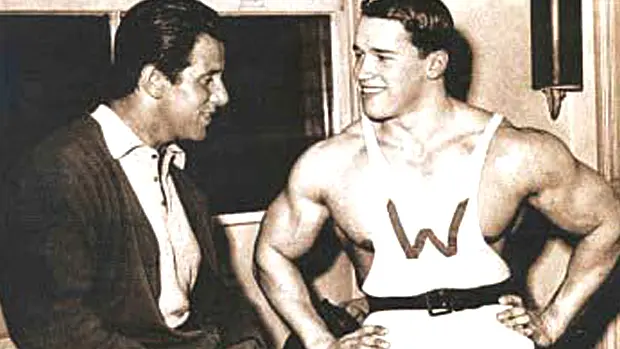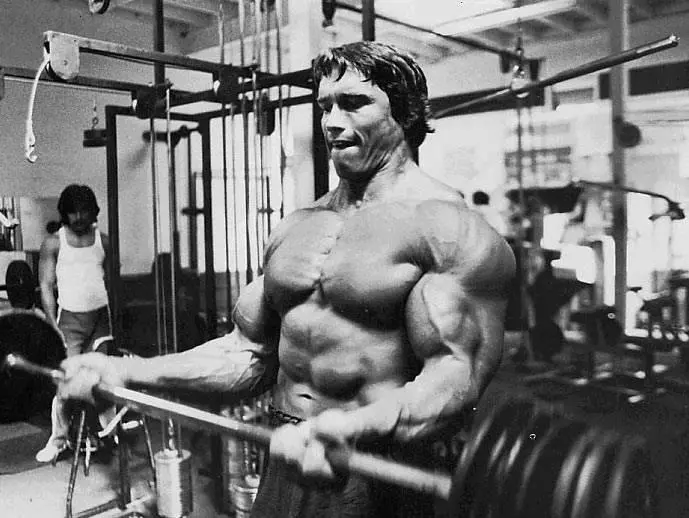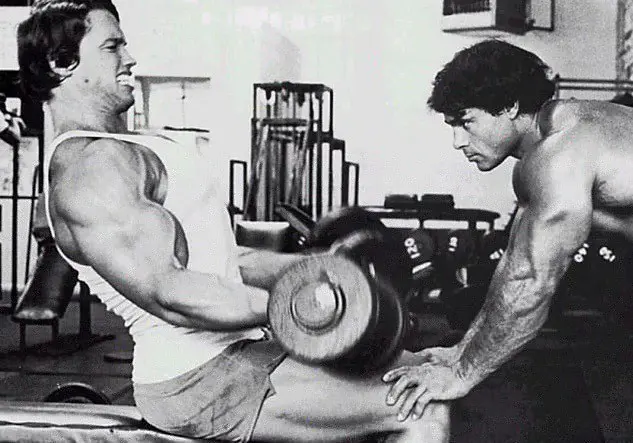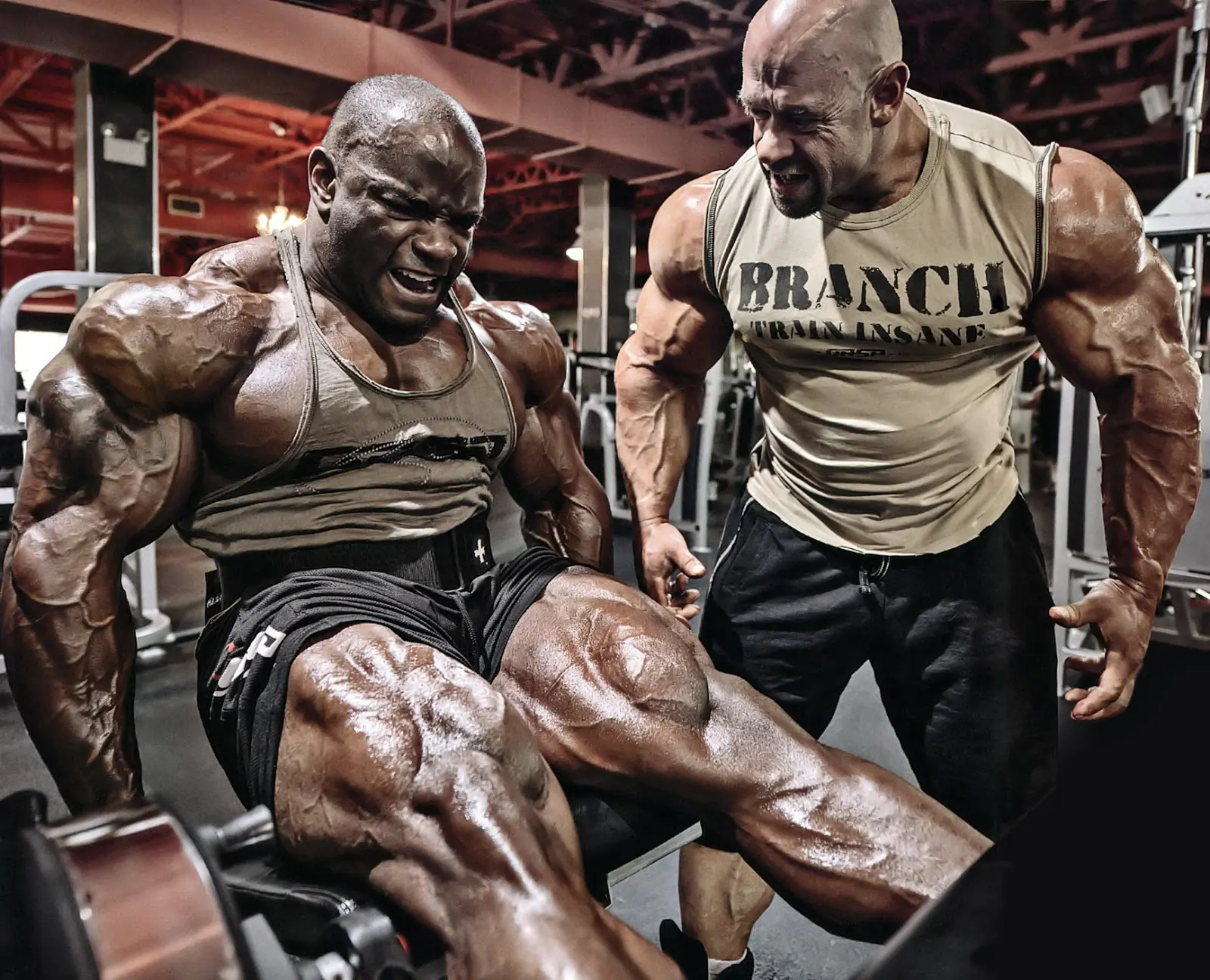To the uninitiated, bodybuilding and powerlifting look very similar. Both activities involve lifting weights, and bodybuilders and powerlifters are similarly big, strong, and muscular. Athletes from both sports also do many of the same exercises.
However, when you delve a little deeper into these activities, it soon becomes clear that while there are similarities, they are also very different. In this article, we’ll explore these differences so that you can decide which training approach is right for you.
We’ll also reveal how you can combine both types of training to create a bodybuilding-powerlifting hybrid.
Bodybuilding basics
Bodybuilding has been popular for centuries. Muscular people have long been admired. Humankind has had a long obsession with the ideal physique, and that’s exactly what bodybuilders are trying to create. Many famous works of art feature muscular models, and even the ancient Greek and Roman gods were often depicted as muscular.

Fast-forward to the 20thand 21stcenturies, and bodybuilding is even more popular. There are bodybuilding competitions in almost every country in the world, and many actors and music stars have bodybuilder-like physiques. And what was once thought of as a male-orientated activity, is now embraced by women too. While bodybuilding is a bonafide sport, it’s also a recreational activity enjoyed by people who will never compete on stage. They train just to look good.
Bodybuilding aims and training
The aim of bodybuilding is to increase muscle size, a process called hypertrophy. Bodybuilders use exercises to sculpt and shape their bodies to achieve the look they want. Training usually involves a split routine, where different muscles are trained on different days. This allows bodybuilders to give each muscle group the attention it deserves, as well as plenty of time to rest before training it again.
Level Up Your Fitness: Join our 💪 strong community in Fitness Volt Newsletter. Get daily inspiration, expert-backed workouts, nutrition tips, the latest in strength sports, and the support you need to reach your goals. Subscribe for free!
Example weekly training routine for bodybuilding:
| Monday | Tuesday | Wednesday | Thursday | Friday | Saturday | Sunday |
| Chest | Back | Rest | Shoulders | Legs | Arms | Rest |
Bodybuilding workouts usually involve several exercises per muscle group. This means each muscle can be trained from several angles and with a variety of exercises. This is thought to be the best way to increase muscle size (1).
Exercises are selected and performed to produce maximal muscle growth. Bodybuilders often focus on how an exercise feels rather than how much weight they can lift. This is called the mind-muscle connection and is another factor that is thought to affect hypertrophy.
Most bodybuilding training involves working in the 6-12 repetition range. This allows them to use moderate to heavy weights while performing enough reps to trigger hypertrophy. They also do multiple sets of each exercise, usually 2-5 per exercise, combined with rests of between 30-90 seconds.
These factors combine to create muscle tension, microtrauma (muscle damage), and “the pump.” The pump is thought to be essential for building muscle and describes the increase of blood flow into the muscles being worked. All of these factors combine to produce muscle growth (2).
Example bodybuilding chest workout:
| Exercise | Sets | Reps | Recovery | |
| 1 | Bench press | 4 | 8 | 90 seconds |
| 2 | Inc. DB press | 3 | 10 | 60 seconds |
| 3 | Dips | 3 | Max | 60 seconds |
| 4 | Cable crossovers | 3 | 12 | 45 seconds |
| 5 | Push-ups | 2 | Max | 30 seconds |
Bodybuilders often use workout intensifying methods called training systems. Common training systems include:
- Drop sets
- Supersets
- Partial reps
- Forced reps
These methods allow bodybuilders to train even harder than usual, which can help increase muscle growth. However, these methods are also very painful and are not really suitable for beginners.
Bodybuilding summary
Bodybuilders train for appearance. Muscle size is important, but so too are things like proportion and symmetry. It’s not enough to be big; all the muscle groups should be in balance to create an aesthetically pleasing physique. Competitive bodybuilders are judged on how they look.
While they look very strong, increased strength is not the main aim of bodybuilding training. Improved performance is not usually much of a consideration for bodybuilders.
Powerlifting basics
Powerlifting is a relatively new sport. It was started in the early 1960s as an offshoot of Olympic lifting. Where Olympic lifting involves two events – the clean and jerk, and the snatch, powerlifting involves three – the squat, bench press, and deadlift (3).
Level Up Your Fitness: Join our 💪 strong community in Fitness Volt Newsletter. Get daily inspiration, expert-backed workouts, nutrition tips, the latest in strength sports, and the support you need to reach your goals. Subscribe for free!
In powerlifting, the athletes get three attempts at each exercise, and the person with the highest total for all three lifts wins. The lifts are always done in the same order, and each attempt is monitored by a team of judges who determine if the exercise was performed correctly. Each lift has different rules. For example, squats must descend until the thighs are parallel to the floor, and the bar must touch the chest in the bench press.
Because powerlifting uses standard weight training exercises and equipment, it is much more accessible than Olympic lifting. The Olympic lifts are tough to learn and cannot be practiced in most commercial gyms. In contrast, squats, bench presses, and deadlifts are very common exercises, and often feature in the workouts of bodybuilders as well as regular gym-goers.
However, bodybuilders and powerlifters perform these exercises very differently. Check out these articles to discover the differences between powerlifting and bodybuilding deadlifts, bench presses, and squats.
Powerlifting aims and training
The main focus of powerlifting training is getting stronger. Powerlifters are less concerned with how they look, and only really care about how much weight they can lift. Whereas bodybuilders use a variety of exercises to maximize hypertrophy, powerlifters build their workouts around the lifts they use in competition, i.e., squats, bench presses, and deadlifts. Additional exercises are performed, but mainly to improve performance in the main three lifts.
Subsequently, instead of training different muscle groups on different days, powerlifters tend to focus on different exercises on different days.
Example weekly training routine for powerlifting:
| Monday | Tuesday | Wednesday | Thursday | Friday | Saturday | Sunday |
| Bench press (1) | Squat | Rest | Bench press (2) | Rest | Deadlift | Rest |
Powerlifters tend to train using heavy weights and low reps. This is the best way to build strength. The standard rep range for powerlifting is 1-5 reps per set. To lift the heaviest weights possible, powerlifters also take long rests between exercises, usually 3-5 minutes. This not only allows the muscles to recover but the central nervous system too.
Powerlifting training does build muscle, but not to the same degree as bodybuilding. A typical set of powerlifting training only lasts a few seconds. This means there is no pump effect, less microtrauma, and less of a trigger for hypertrophy. Some powerlifters add bodybuilding exercises to their workouts, using them as accessories to increase their performance in the competition lifts.
Example powerlifting bench press workout:
| Exercise | Sets | Reps | Recovery | |
| 1 | Bench press | 6 | 2 | 4 minutes |
| 2 | Wide grip bench press | 3 | 5 | 3 minutes |
| 3 | Weighted dips | 4 | 8 | 2 minutes |
| 4 | Pendlay row | 4 | 8 | 2 minutes |
| 5 | Face pulls | 3 | 12 | 60 seconds |
| 6 | Skull crushers | 4 | 10 | 90 seconds |
Powerlifting summary
Powerlifters are judged on their strength and not their appearance. They are often big and muscular, but this is not the aim of this type of training, and bigger does not always mean stronger. Some powerlifters also carry a lot of body fat, especially in the heavyweight divisions.
Powerlifters spend a lot of time mastering the squat, bench press, and deadlift. These exercises make up the foundation of powerlifting training. While additional exercises are used, they are only included to increase performance in the contested lifts.
Can you combine bodybuilding and powerlifting?
Bodybuilding and powerlifting are clearly different activities, but they also share many characteristics. Both involve lifting weights, feature some of the same exercises, and both can help you build muscle, and get stronger.
If your main focus is a strength, powerlifting training is your best choice. If you want to build bigger muscles, and don’t care so much about performance, bodybuilding is for you. But, if you want to be big AND strong, there is nothing to stop you from creating a bodybuilding-powerlifting hybrid that borrows from both of these types of training.
This combined approach is often called power building, and you can read more about this subject in this article.
Powerbuilding workouts feature strength-building powerlifting exercises, as well as muscle-building bodybuilding exercises. For many exercisers, this is the perfect training model as it saves you from having to choose between these two effective but different training styles.
Example power building back workout:
| Exercise | Sets | Reps | Recovery | |
| 1 | Deadlifts | 4 | 4 | 3 minutes |
| 2 | Romanian deadlift | 3 | 6 | 2 minutes |
| 3 | Lat pulldowns | 3 | 8 | 90 seconds |
| 4 | Cable rows | 3 | 10 | 75 seconds |
| 5 | Pullovers | 2 | 12 | 60 seconds |
Wrap up
If you want to be a good bodybuilder, that’s the type of training you need to focus on. Similarly, if you’re going to do well in powerlifting, you need to train like a powerlifter.
However, if you just enjoy training, aren’t interested in competition, and want to be both strong and muscular, a hybrid bodybuilding-powerlifting approach might suit you best. Not sure which option is right for you? Try each one for six months and then decide!
References:
1-Fonseca, Rodrigo M.; Roschel, Hamilton; Tricoli, Valmor; de Souza, Eduardo O.; Wilson, Jacob M.; Laurentino, Gilberto C.; Aihara, André Y.; de Souza Leão, Alberto R.; Ugrinowitsch, Carlos (2014-11). “Changes in Exercises Are More Effective Than in Loading Schemes to Improve Muscle Strength”. The Journal of Strength & Conditioning Research. 28 (11): 3085. doi:10.1519/JSC.0000000000000539. ISSN 1064-8011.
2-Schoenfeld, Brad J. (2013-03). “Potential mechanisms for a role of metabolic stress in hypertrophic adaptations to resistance training”. Sports Medicine (Auckland, N.Z.). 43 (3): 179–194. doi:10.1007/s40279-013-0017-1. ISSN 1179-2035. PMID 23338987.
3-Encyclopedia Britannica: Powerlifting https://www.britannica.com/sports/powerlifting
Also, read:
- Powerbuilding Basics
- Bodybuilding vs. Powerlifting Deadlifts
- Powerlifting vs. Bodybuilding Bench Press
- Transitioning From Powerlifting To Bodybuilding
- Bodybuilding vs. CrossFit vs. Powerlifting











